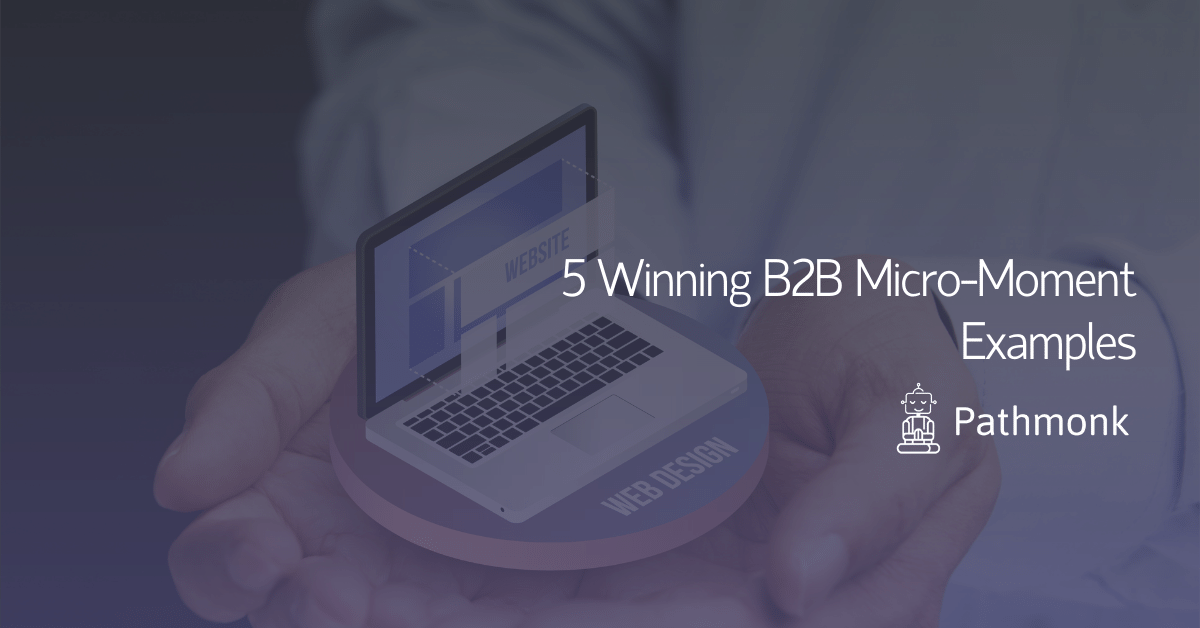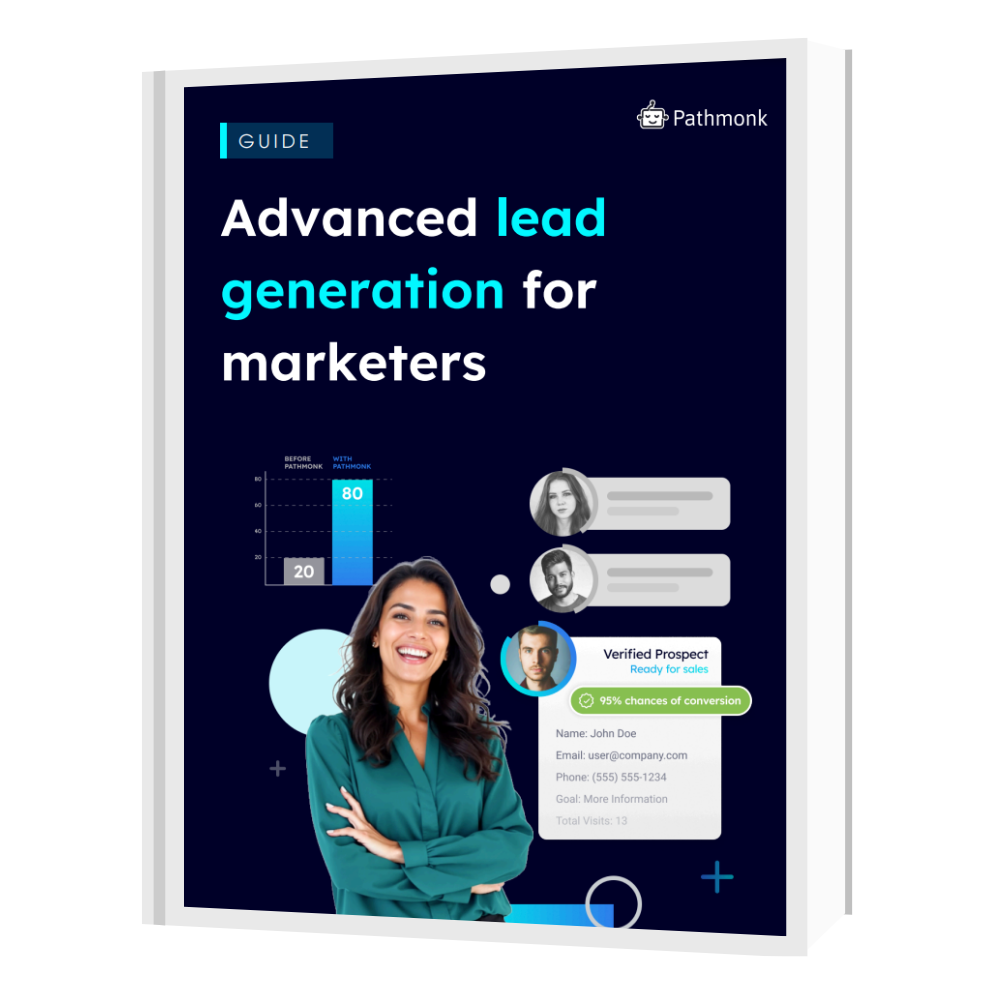
The widespread adoption of smartphones, tablets, and other mobile devices led to a new marketing type: micro moment marketing. It comes as no surprise considering that these devices constantly enable people to find new intuitive ways to learn and do things.
Mobile devices enable countless interactions, such as dropping quick work emails while waiting, posting vacation photos, and texting your friend or family member as soon as you hear some exciting news. These moments are now a standard part of life, but they aren’t moments where people might necessarily want to engage with a brand.
Still, there are occasions in which individuals and businesses are open to influence. Business marketers need to be ready for these moments if they want to improve buyer experience and return on investment. It’s essential for business-to-business (B2B) companies that usually have a more specific target audience.
You can find in this article the definition and importance of micro-moments and five micro-moment examples of B2B companies. Don’t let buyers slip through your hands as business opportunities in this era come and go in a second!
Generate better leads to grow your sales
Discover new strategies to unlocking a flood of high-quality leads from your website.

What Is a Micro Moment?
Google describes a micro moment as the instances in which consumers turn to a device to take action on what they currently want or need. You can also describe them as all the moments where a mobile search influences purchases.
These searches occur at any moment as consumers go about their day. It can be during a morning commute, as you wait for your turn at the ATM, or in the middle of a busy day.
In fact, up to 82% of smartphone users check their phones before finalizing a store purchase, and 91% turn to their devices for ideas amid a task, according to a study Google made about consumers in the micro-moment based on 5,398 internet users.
What Is the Importance of a Micro Moment in B2B Marketing?
Numerous studies have revealed that millennials were playing increasingly crucial roles in B2B purchasing decisions. However, a report based on surveys of over 17,000 professionals confirmed that Millennials are now significant players in B2B buying.
Over 40% of them influence each stage of the buying process. This process includes recognizing the business need, investigating potential vendors, evaluating them, and approving the purchase.
The go-to device for millennials is the smartphone, for either personal or professional needs. It surpassed personal computers and became the most used device for work activities. For this reason, B2B marketers should assume that most of their millennial business interactions occur via micro-moments, so they should ensure they can easily view their content on smartphones.
Winning Examples of Micro Moments
If B2B companies want to succeed in the micro moment world, they have to earn their customer’s consideration constantly. It’s essential to remember that they’re more loyal to their needs than to any brand.
There are three vital strategies that you can employ to win micro-moments in the new brand battleground:
- Be there. You need to anticipate your users’ micro-moments and commit yourself to helping them when they occur.
- Be useful. You need to be useful and meet the needs of customers in these moments. Connect them to the answer and information they’re looking for.
- Be quick. The mobile experience of your customers needs to be quick and smooth. They should learn what they need to know, go, and buy the product swiftly. Remember that they’re micro-moments for a reason.
Here are five micro-moment examples of companies that implemented these strategies to build and improve their relationships with their customers:
Red Roof Inn
It implemented these three strategies in a single campaign. The company realized that canceled flights left 90,000 passengers helpless every day, so their marketing team devised a way to track delays and trigger targeted ads for its inns near airports.
These ads catered to people who needed immediate hoteling services, and the company provided them with the relevant information they required. The result was a 60% increase in bookings.
FIAT
FIAT returned to the American market with a small city car, the FIAT 500, after a 28-year absence. Unfortunately, they found out that they had a hard time building awareness after such a long hiatus.
Still, time was on FIAT’s side. Gas prices were increasing, and people’s interest in efficient city cars was high. FIAT took advantage of these opportunities and turned them into significant strengths by deploying mobile ads on categories such as “small car” and “city car.” Each ad took advantage of its context and reached people’s micro-moments of interest.
For example, FIAT ads took desktop customers to its online car configurator. On mobile, it pointed people to the nearest car dealership. It had a 127% unaided recall increase and became successful in America, revitalizing the brand.
Nestlé Waters
As a major B2B consumer packaged goods company (CPG), Nestle didn’t possess end-to-end customer relationships. Its retailers had them. Now that both B2C and B2B customers research even small decisions, it became essential for Nestlé to show them a more personalized experience as they have been less responsive to mass marketing.
For that reason, the North American branch created a subscription channel for beverages such as Nestea, coffee, and tea. Although it was an unusual move for a CPG company, it directly linked Nestlé to its customers.
The company incorporated specialists on every brand team it had and briefed them on their performance. Ultimately, all their brand and performance teams were integrated into one. It was a huge undertaking, but it resulted in an improved consumer buying experience.
Nestlé now finds a larger volume of qualified consumers even after cutting its acquisition costs by over 30%. It’s one of the best examples of micro-moments for B2B companies, even if the change supports individual consumers.
L’Oréal
This world-leading company in beauty had to completely reinvent its marketing scheme to keep up with the micro-moment trend. It wasn’t a single instance that made them realize that. The marketing team at L’Oréal started to recognize the necessity the moment smartphones began to influence the way people consumed media and chose products.
Its first change was to launch an app that let consumers virtually try makeup. The app, Makeup Genius, scanned their face and displayed how several products and shade mixes achieved different looks in real-time.
Consumers could order the products they tested by pressing a button. The app tracked their purchases, and it offered tailored recommendations as it learned their preferences. This software now has over 20 million loyal users that enjoy an assistive experience.
The second change was to take a data-driven approach to answer questions and concerns that consumers had. L’Oréal partnered with Google and put out a series of quick videos about contouring personalized by demographics and intent. This approach allowed L’Oréal to answer the questions of over 9 million consumers while giving them the best advice possible.
Some takeaways of these micro-moment marketing examples are that it’s necessary to make the consumer’s experience personal. They also leave digital footprints when they watch videos, which helps companies predict their needs and develop accurate strategies.
Lowe’s
With the proliferation of new technologies, Lowe’s had to shift to digital marketing to continue delivering its brand purpose. It wasn’t an easy process for its marketers. The biggest challenge the company encountered around the new mobile and digital world was the complex consumer journey.
When there are too many micro-moments, it’s nearly impossible to help everyone in need. Still, digital media allowed Lowe’s to deeply connect with its consumers, letting it create value and engage customers on a personal level.
Another example of micro-moments that Lowe’s took advantage of were digital touchpoints. They used them to ensure every store had all the essential items a consumer might need, even when natural disasters strike. The company called it the “never out” strategy, and it delivered on it because of a promise made years back.
It wasn’t an easy feat as it had to identify numerous items that saw demand increases during catastrophic times. Lowe’s had to coordinate the inventory
The Bottom Line
The micro-moment examples mentioned aren’t the only ones you can find. Several companies have effectively taken advantage of the opportunities that micro-moments offer. Now that consumers are choosing their journey, businesses need to concentrate more on engaging them.
Focusing on social media or publishing short, engaging videos that answer questions that consumers might have are excellent ideas. You don’t need to eliminate your long-term content as it can be helpful as you gain loyal customers. Still, it’s crucial to be there for the micro-moments.
Another crucial takeaway of these micro-moment marketing examples is that it’s necessary to have mobile-friendly content. Having a poor mobile user experience is the fastest way to turn a potential customer away.
Ultimately, it’s necessary to have content that customers can quickly access to gain relevant information about your website or product. Helpful content that can connect people to the answers they seek are FAQs, how-to’s, product demonstrations, feature comparisons, and even cost breakdowns.
Most B2B consumers turn away from sites that require too many steps to solve their issues, so don’t be afraid to show your product’s cost on your site. Be prepared for each of these micro-moments and give your consumers quick and swift answers!
Understand your customer journey analytics
See how your users behave, find drop-offs, and receive actionable insights with AI.









